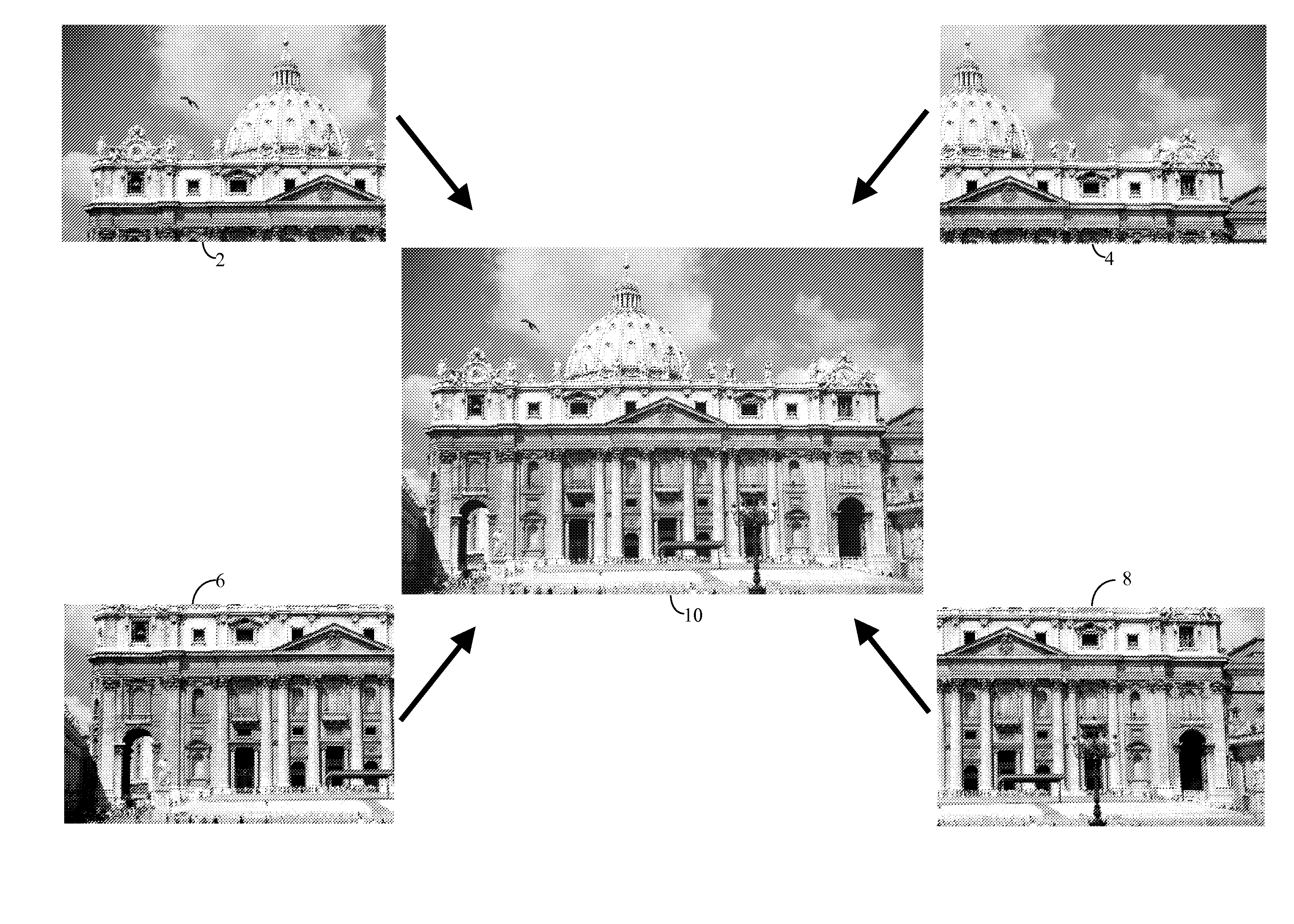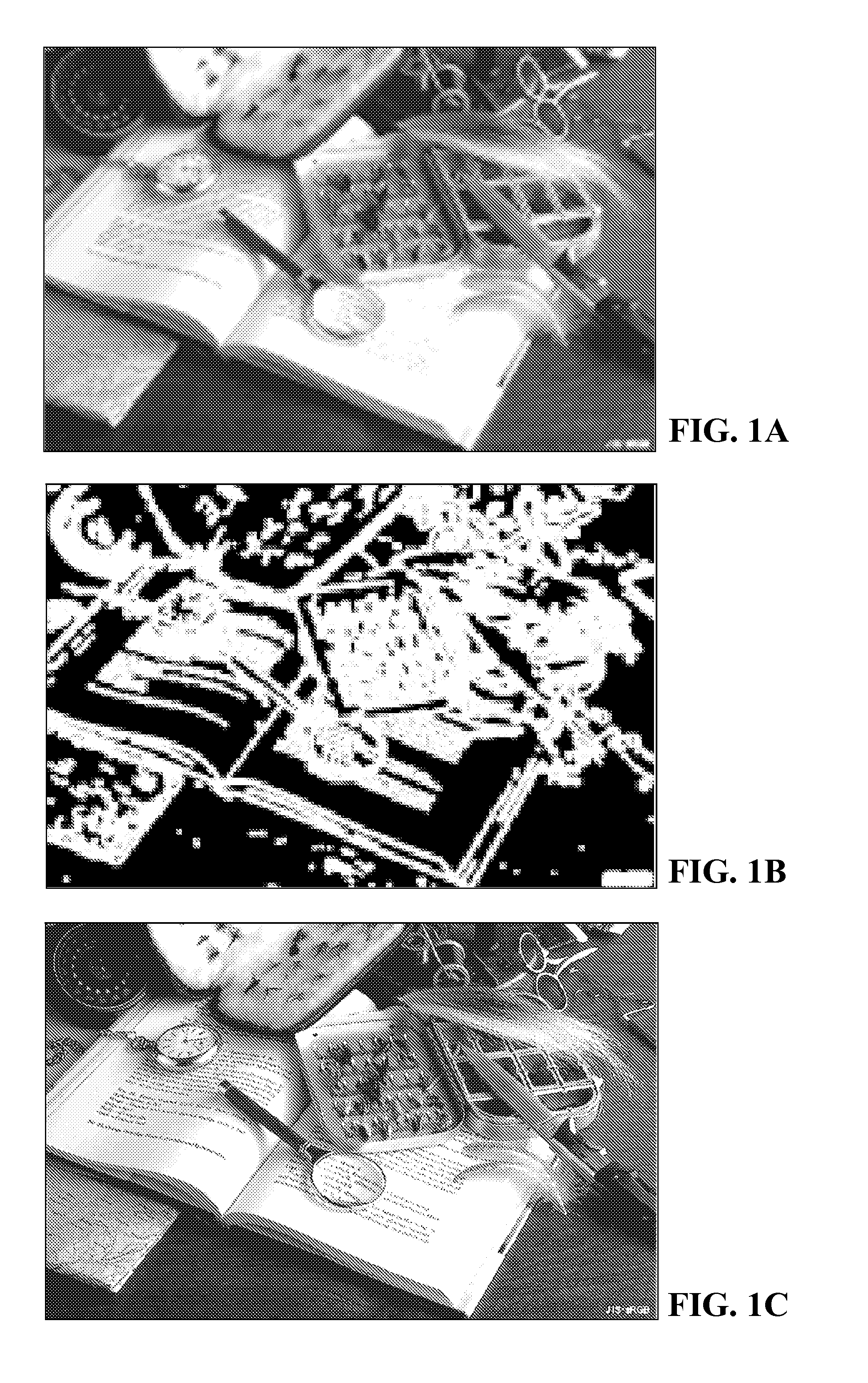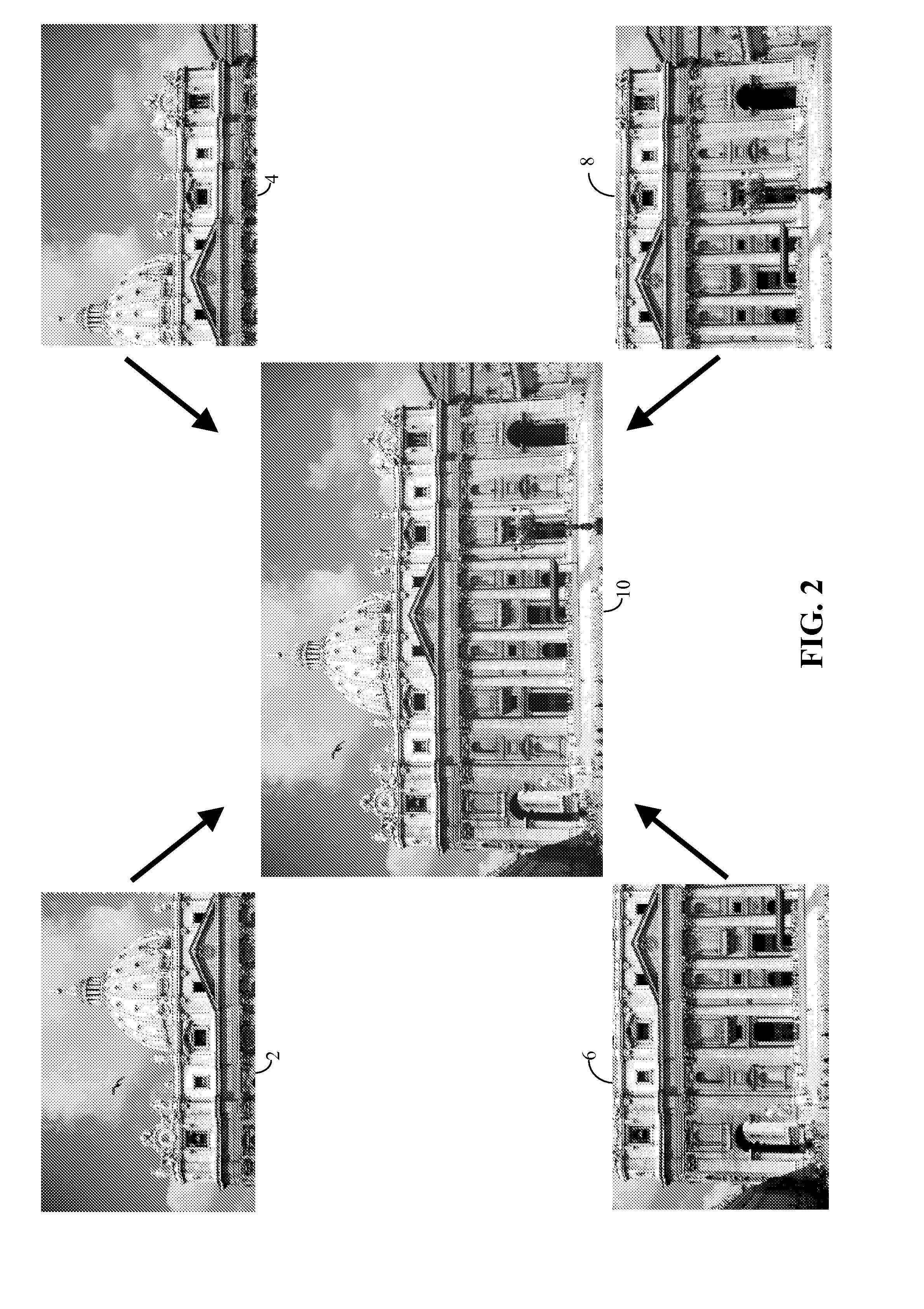Context and Epsilon Stereo Constrained Correspondence Matching
a correspondence matching and context-based technology, applied in the field of matching pixel points in multiple images, can solve the problems of limited availability of matching tools for non-pinhole cameras, and typically provide a larger field of vision than
- Summary
- Abstract
- Description
- Claims
- Application Information
AI Technical Summary
Benefits of technology
Problems solved by technology
Method used
Image
Examples
Embodiment Construction
[0061]Correspondence matching is an essential problem in computer vision, especially in stereo, view synthesis, and 3D reconstruction. Such applications make use of epipolar geometry and are subject to the stereo constraint, which generally applies only camera setups that adhere to the pinhole camera model.
[0062]Catadioptric cameras do not adhere to the pinhole camera model. Consequently, a strict stereo constraint may not exist for such cameras. In general, catadioptric optical systems combine refraction and reflection in an optical system by means of lenses (dioptrics) and curved mirrors (catoptrics). Multi-perspective catadioptric cameras, and camera setups, have an advantage of a wider field of vision, FOV, than is achievable with pinhole camera model setups.
[0063]A simplified example of a catadioptric camera setup 61 is shown in FIG. 5. A perspective camera 65 (or a single-perspective camera, such as a pinhole camera, for creating 2D perspective projection images of 3D scenes) ...
PUM
 Login to View More
Login to View More Abstract
Description
Claims
Application Information
 Login to View More
Login to View More - R&D
- Intellectual Property
- Life Sciences
- Materials
- Tech Scout
- Unparalleled Data Quality
- Higher Quality Content
- 60% Fewer Hallucinations
Browse by: Latest US Patents, China's latest patents, Technical Efficacy Thesaurus, Application Domain, Technology Topic, Popular Technical Reports.
© 2025 PatSnap. All rights reserved.Legal|Privacy policy|Modern Slavery Act Transparency Statement|Sitemap|About US| Contact US: help@patsnap.com



